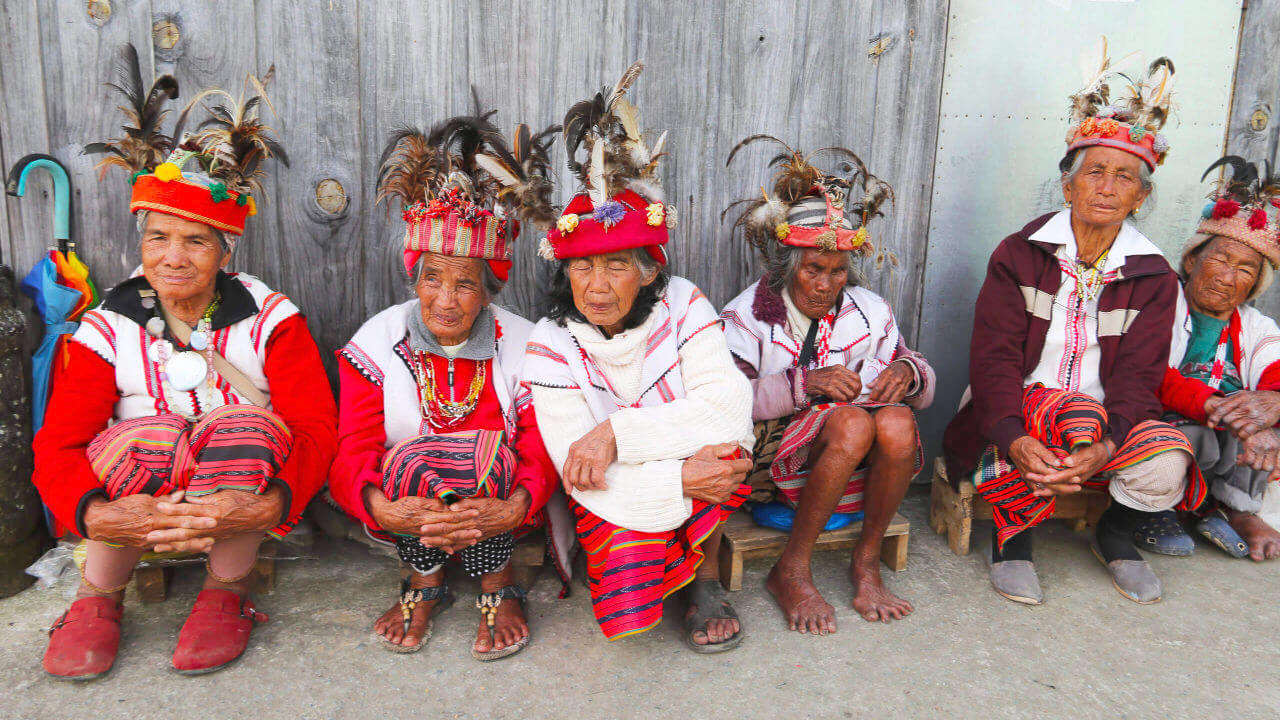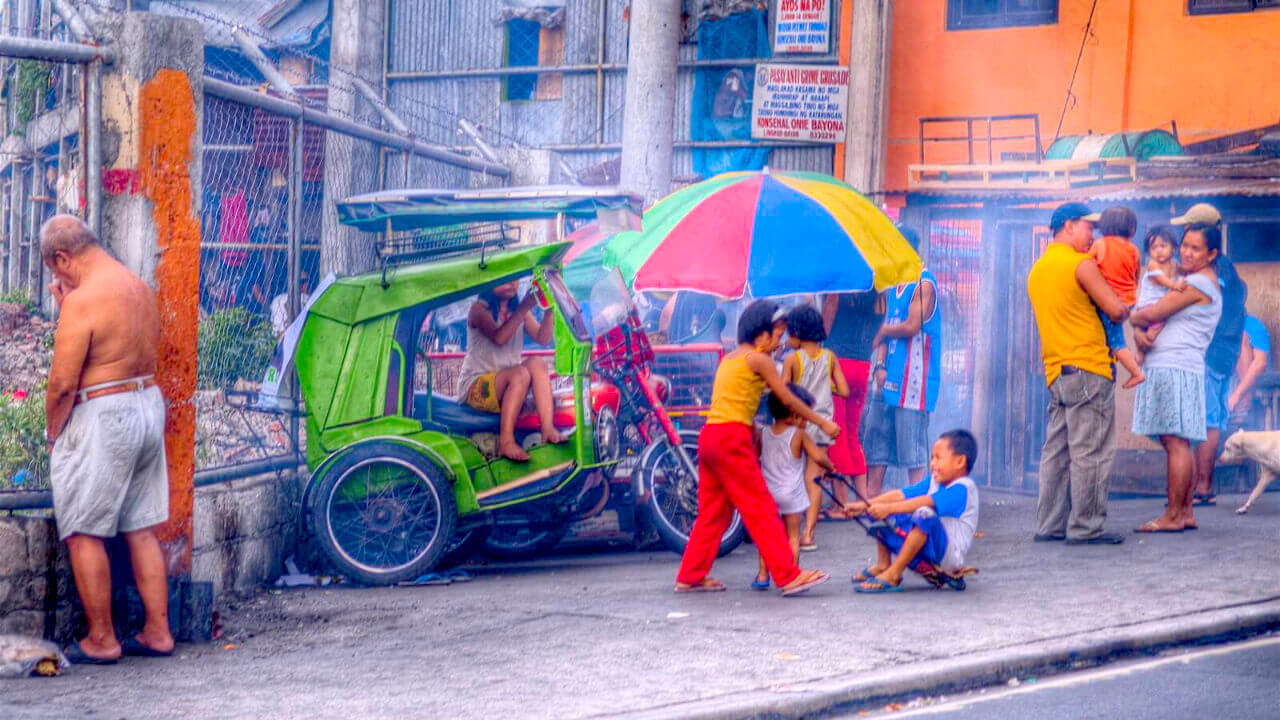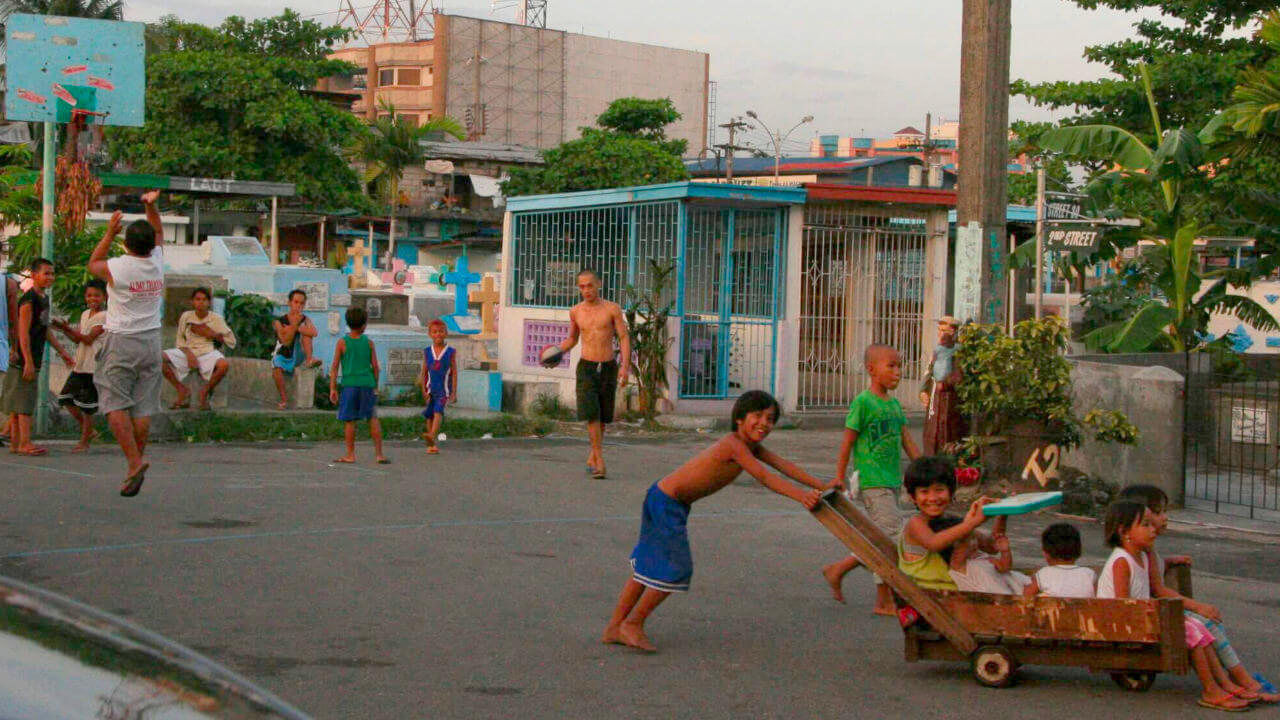
The Philippines is home to dozens of tribes, ethnic groups and peoples, all having their own unique culture and traditions around death. One of the most fascinating burial customs is practiced by the Kankanaey, and is called the hanging coffins. Specifically, this refers to coffins hanging from cliff sides or caves. We also visit the North Manila Cemetery and learn about the community of grave dwellers!
Before we explore more these eerie practices, it is also worth to mention other traditional burial rites found in the Philippines! For instance, these include placing the dead on trees or even in hollowed trees, or in jars. The latter, better known as jar burials, is the technique of burying a corpse after it placing it in large jars.
Although the Philippines is primarily a Catholic country, many indigenous peoples have retained their burial customs. Therefore, a combination of Christianity and Indigenous beliefs is present in most contexts. This is also the case for the custom of Hanging Coffins.
It is specifically the Kankanaye people, an Igorot ethnic group, that use these Hanging Coffins. Moreover, they live in Sagada, a mountainous region of North Luzon and have fascinating beliefs regarding death. Researchers also classify this practice often as a sky burial.

Hanging coffins also exist in Southern China made by the (now extinct) Bo people hundreds of years ago, and in Indonesia by the Torajan people of Sulawesi. Additionally, the tradition of Hanging Coffins in Sagada is pre-colonial. Although it is difficult to determine its exact chronological origin, we know that it exists for hundreds of years. However, nowadays this death practice is slowly dying out with only some traditional burials taking place every few years.
These traditional funerals follow a specific protocol! For example, the coffins are quite small because the deceased has to be in a fetal position. That is also based on the Kankanaey belief that everyone needs to leave this world the same way they have entered it. Finally, once the body is in the coffin, the procession heads out to the treacherous cliffs of Echo Valley.
Additionally, mourners want to remain close to the body during the procession hoping that they come in touch with deeng. Deeng refers to the juice of the rotting corpse. The Kankanaey believe that it also holds the skills and abilities of the dead. Therefore, by touching it they hope that these skills pass on to them.
Upon arrival at the cliffs, the Kankanaey stop fighting for the deeng, though, and start working together. Although the task of hanging the coffins is quite challenging, the whole community joins and helps with the process. Finally, they either nail the coffins on the cliffs or just hang them with ropes.
"The deceased are in a fetal position because everyone needs to leave this world the same way they have entered it."

How high the coffin is going to be is also an indicator of the social status and respectability of the deceased person. Moreover, one needs to meet certain criteria in order to have the honor of a hanging coffin:
In addition to these, the Kankanaey do not allow for their dead to be disturbed. For instance, the Hanging Coffins of Sagada have turned into a popular tourist attraction. Due to that, there is a prohibition of speaking loudly when visiting the Echo Valley. This way the dead can also rest with the respect they deserve.
There are several purposes for the existence of these Hanging Coffins. Firstly from a spiritual point of view, the Kankanaey believe that the higher the corpse is placed, the closer it is to heaven and the sacred ancestors.
Secondly, the Kankanaey wanted to preserve their bodies after death as well as possible, but also let them rest in peace. Therefore, burying their dead in the ground was not ideal, since they knew that bodies decompose faster in the earth. Hanging the coffins above the earth was a better option, instead. Moreover, this altitude kept away head hunters and any other potential disturbances.
Finally, there is also a practical reasoning for this custom, one that is rooted in the times of Hispanic colonization. Historically, these indigenous populations were forced to inhabit the mostly mountainous region of Sagada. Due to limited fertile soil every acre of land was important. Therefore, by using hanging coffins, they managed to save more space for crop cultivation!

While the Kankanaey prefer to let the dead alone, thousands of homeless in Manila chose, instead, a different approach. Due to how dangerous the slums of Manila are, thousands of homeless have settled in the North Manila Cemetery. This is also one of the oldest and the largest cemetery in the Philippines housing over a million dead.
Furthermore, these people live in mausoleums and by the gravestones, and the have built a whole community! Although there is no running water or cleaning facilities, the, so called, grave dwellers like it there. After all, life in the cemetery is quieter and safer than the alternative!

The community exists for decades and still goes strong nowadays. For example, a visitor could see children doing their homework on tombstones. Moreover youngsters play basketball among the towering graves, and others just lay on the cooling marble during hot evenings. Although the police raided the cemetery many times, and even tried to disband the community, it was to no avail.
Interestingly, there have also been sightings of thirsty ghosts roaming the cemetery during the night! However, this does not scare off the residents. Instead, they just offer them some water and the ghosts disappear. Regardless if you believe such testimonies, the metaphorical value of these statements cannot be denied: The living and the dead co-exist in balance at the North cemetery of Manila.

We hope you learned something new regarding this country’s death practices!
If you want to learn more about sky burials, check out our Towers of Silence (Iran), the sky burials of the Toraja (Indonesia) and Celestial Burials (Tibet) articles. For other examples of living with the dead you can read more on the Tribal Funeral Practices of Papua New Guinea. Finally, another article focusing on alternative coffins have a look at our post about Ghana.
According to data from 2018, the average mixed death rate per 1.000 people is 5,873. Additionally, there are over 106 million people residing in the Philippines! Combining these two, we realize that the number of dead per year is of course enormous! The death rate of the Philippines is on the rise since 1999.
That heavily depends on the customs of the ethnic and religious groups of the deceased!
Christianity is the most common religion (92%!). Specifically, the vast majority, over 80% of Filipinos is Roman Catholic. The second largest religion is Islam, mostly in the southwest. Anitism refers to Philippine folk and indigenous traditions. Although officially a tiny part of the population practices that, most people follow such practices next to their main faith!
The Organ Donation Act of 1991 allows for Filipinos donate any of their organs. The rate of utilized organs, however, is 0,09 per million population (2019).